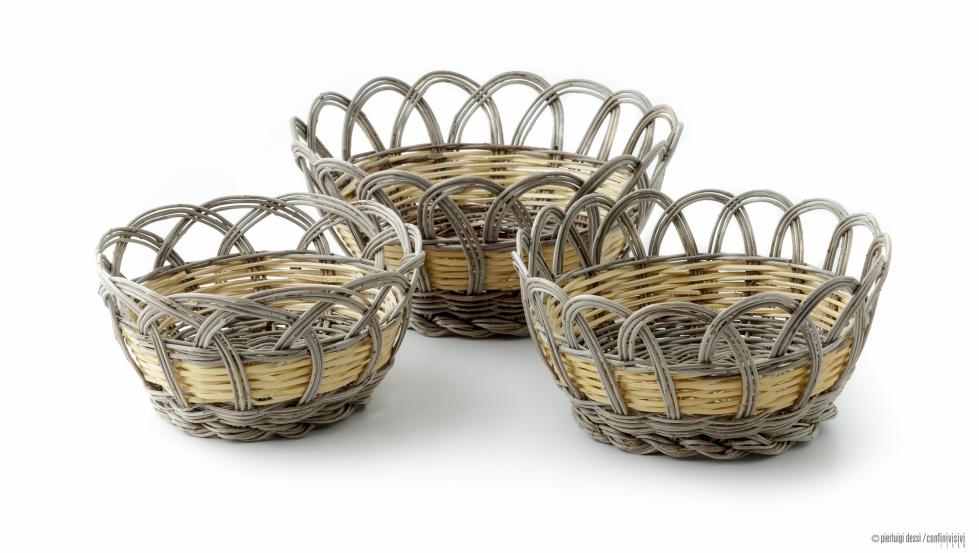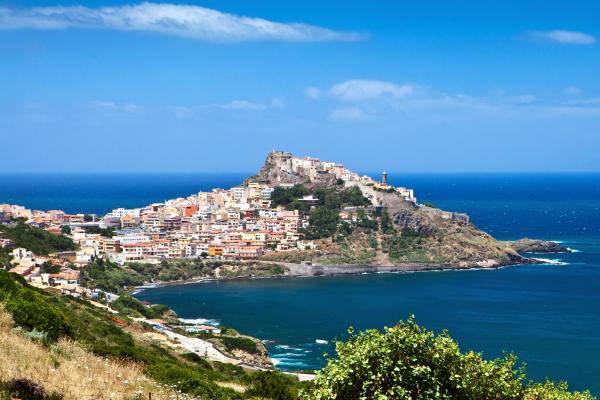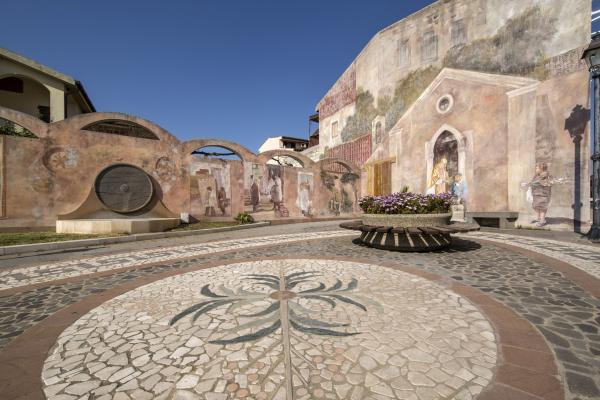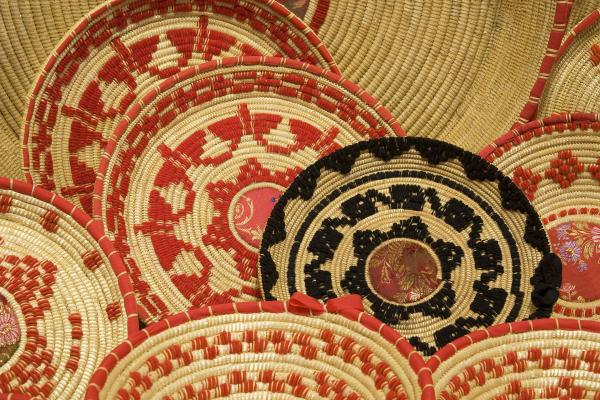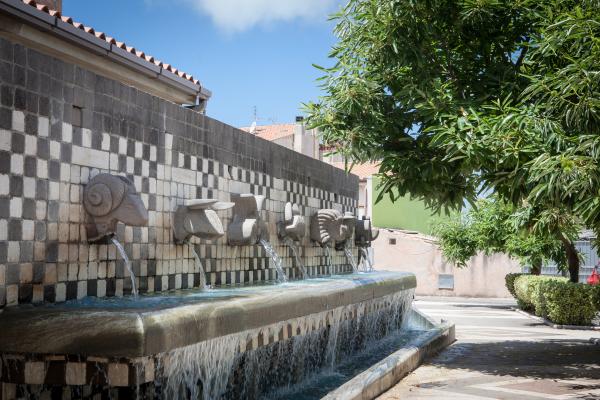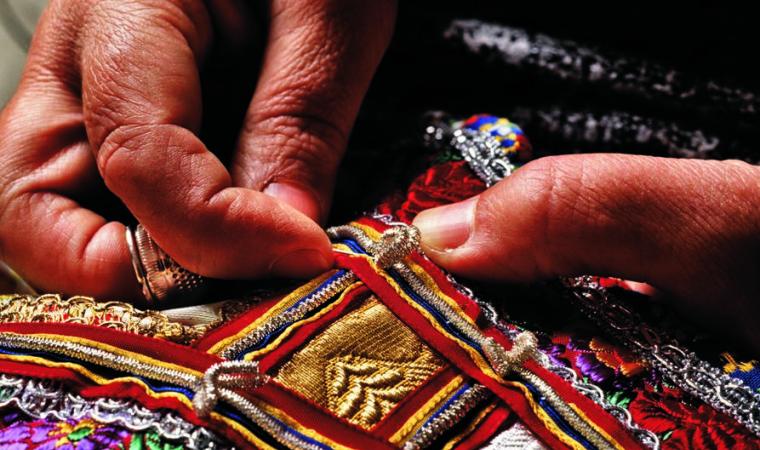
Artistic handicraft is an intrinsic and distinctive feature of Sardinia. Weaving represents one of its main components, thanks to the skilful hands that have been able to perfect the art of wicker basket-making over the centuries. Their shapes vary according to the type of material and place in which they are made: in Flussio, Montresta, Ollolai and Sennori, asphodelus is the raw materials par excellence, while in lowland localities, near ponds or by the sea, like Castelsardo, San Vero Milis and Sinnai, rushes, grain or Mediterranean dwarf palm are used for making baskets. All the towns share an ancient and interesting tradition: women have been able to pass down the secrets of weaving, creating different shapes based on the function of the wicker containers, mixing coloured inserts, extraordinary designs and traditional patterns.
In Sinnai, modernity and tradition are woven together in the baskets, the pride of the local handicraft production, which finds its maximum expression in the Basket and Handicrafts Fair, which has been organized every August since the last decades of the 20th century, to highlight the value of an art that time has not cancelled, but rather renewed. The baskets of Sinnai are made from woven plant fibres, like reed and hay, after which they are elegantly embellished with functional forms and characteristic designs. They were once an integral part of the bride's trousseau, known as su strexu de fenu (hay container).
Flussio, a small town in the Planargia area, is famous for the creation and production of baskets made of asphodelus, a widespread practice also in the nearby village of Tinnùra. The corbule, as the artisan baskets are commonly called, are made by weaving together the stems of the asphodelus plant. In April, to commemorate the ritual of the gathering of stems in the surrounding countryside, a community celebration is organized, Tirende isciareu (Gathering the asphodelus), during which the artisans talk about all the phases of basket-making. To gather information on the art of weaving in the village, you can visit, the Asphodelus Museum all year round.
In Ollolai, the weaving tradition, which is passed down from mother to daughter, has very ancient roots. It is called su iscrarionzu, which comes from iscraria (asphodelus): it is a complex art, jealously guarded, as an intangible heritage, by the women of the village in the Barbagia area. Castelsardo is also famous all over the world for the production of baskets: here, the use of Mediterranean dwarf palm and raffia is predominant. In order to gain deeper knowledge, a visit to the Mediterranean Weaving Museum is a must. It is unique and located inside the medieval castle of the Doria family.


